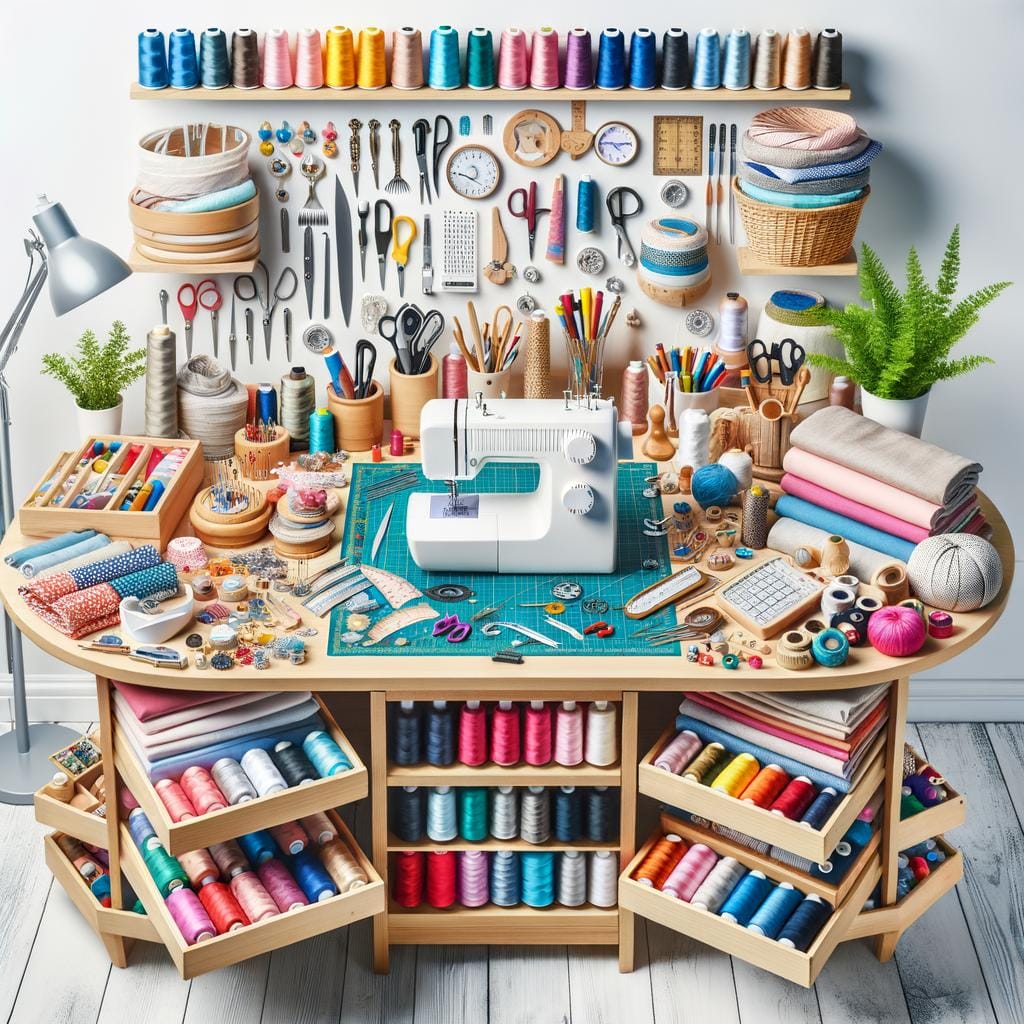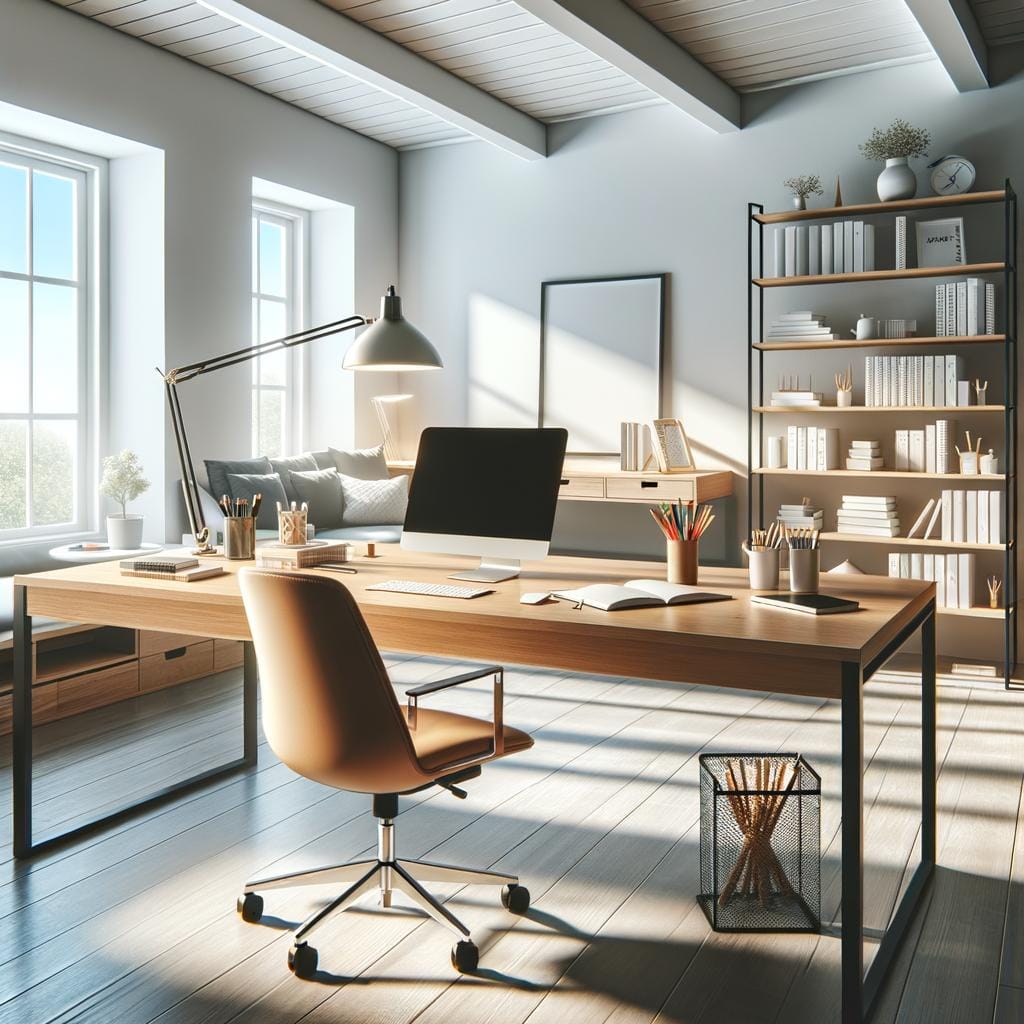Are you looking to create the perfect sewing station setup for an optimal and efficient sewing experience? In this comprehensive guide, we will explore everything you need to know about creating a functional and organized workspace for your sewing projects. From choosing the right location to organizing your supplies and personalizing your space, we’ve got you covered.
The key to a successful sewing station setup is finding the right location that offers comfort and productivity. Whether you have a dedicated sewing room or a small corner in your home, selecting the ideal space can significantly impact your sewing experience. By considering factors such as natural light, ventilation, and accessibility to necessary tools, you can create a work environment that enhances your creativity and efficiency.
Equipping your sewing station with essential supplies is crucial for smooth workflow and quality results. From needles and thread to cutting tools and measuring tapes, having the necessary equipment within reach can save time and make sewing tasks more manageable.
In the following sections, we will delve into organizing your workspace, optimizing lighting and ergonomics, personalizing your area, exploring storage solutions, and maintaining your tools for long-lasting functionality. Let’s dive into creating a sewing station setup that meets all your stitching needs.
Choosing the Right Location
When it comes to setting up your sewing station, one of the first and most crucial steps is choosing the right location. Selecting the appropriate space for your sewing setup can greatly impact your comfort, productivity, and overall sewing experience. Ideally, you’ll want a dedicated area where you can work without distractions and have easy access to all your sewing supplies.
Considerations for Choosing the Right Location
Before designating a spot for your sewing station setup, consider factors such as natural light, proximity to power outlets, and sufficient space for maneuvering around your machine. A well-lit area with ample daylight can help reduce eye strain and ensure accurate stitching. Additionally, having nearby power outlets will make it convenient for plugging in your sewing machine and other tools without needing extension cords.
Creating a Comfortable Environment
To enhance your comfort while sewing, choose a location with good ventilation to prevent overheating during long hours of working on projects. Adequate airflow will also help keep dust particles away from your fabrics and equipment. Furthermore, ensure that the height of your work surface is ergonomic to prevent strain on your back, neck, and shoulders. Investing in an adjustable chair or adding cushions for support can also contribute to a more comfortable sewing experience.
Making the Most of Your Space
Whether you’re setting up a dedicated sewing room or carving out a corner in a multi-functional space, prioritize functionality and organization when choosing the location for your sewing station setup. Consider installing shelves or storage units nearby to keep your supplies within reach but neatly stored away when not in use. By selecting the right location for your sewing station, you can create an environment that promotes productivity, creativity, and overall enjoyment of the craft.
Essential Sewing Supplies
When it comes to setting up your sewing station for optimal functionality and efficiency, having the right tools and equipment is essential. A well-equipped sewing station not only makes your sewing projects easier but also ensures that you can work efficiently and comfortably. Here are some of the necessary supplies you will need for a successful sewing station setup.
Sewing Machine
One of the most important tools for any sewing station is, of course, a reliable sewing machine. Choose a machine that suits your needs and skill level, whether you’re a beginner or an experienced seamstress. Make sure to keep it well-maintained and serviced regularly to avoid any issues during your sewing projects.
Cutting Tools
Having sharp cutting tools is crucial for precise and clean cuts on your fabrics. Invest in a good pair of fabric scissors, rotary cutters, and cutting mats to make your cutting process smoother and more efficient. Keeping these tools within reach at your sewing station will save you time searching for them when needed.
Measuring Tools
Accurate measurements are key to successful sewing projects. Make sure to have measuring tapes, rulers, and seam gauges handy at your sewing station for precise measurements when working on patterns or alterations. By having these tools readily available, you’ll avoid interruptions in your workflow while ensuring the accuracy of your work.
By equipping yourself with these essential sewing supplies, you are setting yourself up for success in creating beautiful garments and projects at your sewing station setup. Make sure to keep these tools organized and in good condition to maximize efficiency and productivity during your sewing sessions.
Organizing Your Workspace
When it comes to organizing your workspace for your sewing station setup, there are a few key tips and tricks that can help you maximize efficiency and productivity. One of the first things to consider is how you layout your tools and supplies. Keeping frequently used items within arm’s reach can save time and make the sewing process smoother. Consider using bins, containers, or drawer dividers to categorize and store your supplies neatly.
In addition to organizing tools, it’s crucial to have a system for storing fabrics effectively. Consider investing in storage solutions such as shelves, bins, or fabric organizers to keep your fabrics neatly folded and easily accessible. This not only helps in saving space but also makes it easier for you to find the fabric you need for your next project quickly.
Another important aspect of organizing your workspace is keeping your tools well-maintained and easily accessible. Consider setting up a designated area for each type of tool to ensure that everything has its place. This way, you’ll always know where to find what you need, leading to a more efficient sewing experience overall.
| Sewing Station Organization Tip | Benefit |
|---|---|
| Use storage bins or containers | Efficient organization and easy access to supplies |
| Invest in fabric organizers | Neatly store fabrics for easy access and space-saving |
| Create designated areas for tools | Easily find and return tools for a streamlined workflow |
By implementing these organizing tips and tricks into your sewing station setup, you can create an efficient workspace that not only saves time but also enhances your overall sewing experience. Stay tuned for more helpful advice on optimizing other aspects of your sewing station in this comprehensive guide.
Lighting and Ergonomics
Proper lighting and ergonomic setup are crucial aspects of creating a comfortable and efficient sewing station setup. Good lighting not only helps you see your work more clearly but also reduces eye strain and fatigue. When setting up your sewing station, consider natural light sources as well as artificial lighting options such as LED lamps or overhead lights to ensure adequate brightness throughout your workspace.
To optimize your sewing experience, it is essential to pay attention to ergonomics. This means setting up your sewing machine at the correct height to avoid straining your neck, back, and shoulders. Adjust the chair height so that your feet are flat on the floor and your thighs are parallel to the ground. Position your machine in front of you at a comfortable distance, allowing you to maintain good posture while working for extended periods.
Here are some tips for improving lighting and ergonomics in your sewing station setup:
- Place your sewing machine near a window to take advantage of natural light during the day.
- Invest in a quality task lamp with adjustable brightness settings for precise illumination.
- Use a cutting mat with grid lines for accurate measurements without straining your eyes.
- Consider adding anti-fatigue mats or footrests to reduce pressure on your legs while sitting.
- Utilize adjustable shelves or storage units to keep frequently used tools within reach without causing discomfort.
By implementing proper lighting and ergonomic practices in your sewing station setup, you can create a more enjoyable and less straining environment for all your sewing projects. Investing time and effort into optimizing these aspects will ultimately enhance both the quality of your work and your overall sewing experience.
Personalizing Your Space
Personalizing your sewing station is a fun and essential part of creating a space that inspires creativity and enhances your overall sewing experience. One creative way to personalize your sewing station is by adding decorative touches that reflect your personal style and preferences. Consider incorporating elements such as color-coordinated storage bins, inspiring quotes or artwork, or even plants to bring life and vibrancy to your workspace.
Another way to personalize your sewing station is by customizing the organization of your tools and supplies. Utilize unique containers, trays, or shelves to store and display your sewing equipment in a way that is both visually appealing and functional. By arranging your supplies in a personalized manner, you can create an environment that not only sparks creativity but also makes it easier to access the tools you need quickly.
In addition to physical decorations and organizational elements, consider incorporating sensory enhancements into your sewing station setup. Play relaxing music or aromatherapy scents in the background while you sew to create a calming atmosphere. By engaging multiple senses in your sewing space, you can further personalize the environment to suit your preferences and make the experience more enjoyable.
| Personalization Ideas | Benefits |
|---|---|
| Incorporate inspiring quotes or artwork | Boost motivation and creative energy |
| Add plants for a touch of nature | Create a fresh and inviting atmosphere |
| Play soothing music or use aromatherapy scents | Promote relaxation and focus while sewing |
Storage Solutions
When it comes to setting up your sewing station, having proper storage solutions is crucial in keeping your workspace organized and clutter-free. Here are some ideas and options to help you maximize the efficiency of your sewing setup:
1. Storage Bins and Containers:
Invest in clear storage bins or containers to store your fabrics, threads, and other sewing supplies. Label each container for easy identification and access. Utilize stackable bins to save space and keep everything neatly organized.
2. Wall-mounted Shelves:
Consider installing wall-mounted shelves above or beside your sewing machine to keep frequently used items within reach. You can display decorative jars or baskets on these shelves to store smaller sewing notions like buttons, pins, and needles.
3. Pegboards and Hooks:
Install a pegboard on the wall behind your sewing station to hang scissors, tape measures, rulers, and other tools. Use hooks of different sizes to accommodate various items. This way, you can visually see all your tools at a glance and easily grab what you need while working on projects.
4. Thread Racks or Spools Holders:
Keep your thread spools organized by installing a thread rack or a spool holder near your sewing machine. This will not only save space but also prevent tangling or misplacing of threads. You can opt for a wall-mounted rack or a tabletop stand based on your preference.
By incorporating these storage solutions into your sewing station setup, you can create a more efficient and organized workspace that will enhance your overall sewing experience. Remember, maintaining a clutter-free environment not only saves time but also allows you to focus better on your projects without unnecessary distractions.
Maintenance and Upkeep
In conclusion, maintaining and caring for your sewing tools and station is crucial to ensure they remain in optimal condition for long-term use. By following a few simple tips and practices, you can preserve the functionality and longevity of your equipment. Regularly clean your sewing machine and tools to prevent build-up of dust and lint that can affect their performance. Oil your machine as recommended by the manufacturer to keep it running smoothly.
Additionally, organizing your supplies in designated storage areas not only keeps your sewing station clutter-free but also helps you locate tools quickly when needed. Invest in quality storage solutions such as bins, shelves, or cabinets to keep everything organized and easily accessible. Proper organization not only saves time during your sewing projects but also prolongs the lifespan of your tools by preventing damage from being mishandled or misplaced.
Lastly, regular maintenance includes checking for loose screws or any signs of wear and tear on your sewing machine. Keep an eye out for any unusual noises or vibrations while using the machine, as these could indicate a potential issue that needs attention. By implementing these maintenance practices into your sewing station setup routine, you can enjoy a smooth and efficient sewing experience for years to come.
Frequently Asked Questions
How Do I Organize My Sewing Station?
Keeping your sewing station organized is essential for efficiency and productivity. Start by setting up designated areas for different supplies like threads, needles, fabrics, and tools. Utilize storage solutions like bins, shelves, and organizers to keep everything in its place. Make sure your sewing machine is easily accessible with proper lighting and a comfortable chair for long hours of sewing.
How Do You Set Up an Efficient Sewing Room?
Setting up an efficient sewing room involves thoughtful planning and organization. Consider the layout of the room to optimize workflow and accessibility to all your tools and supplies. Invest in good quality storage solutions like cabinets, shelves, and pegboards to keep everything organized. Create designated zones for cutting, sewing, pressing, and storing fabric to maximize efficiency while working on projects.
What Does a Sewing Room Need?
A well-equipped sewing room needs essential supplies like a reliable sewing machine, quality thread in different colors, various types of needles, sharp scissors, cutting mats, rulers, measuring tape, pins or clips, irons or steamers for pressing fabrics, adequate lighting for detailed work, and comfortable seating. Additionally, having storage solutions like drawers, bins, baskets, shelves for organizing fabrics and notions is crucial for a functional sewing room setup.
Investing in ergonomic furniture will also contribute to a comfortable work environment during long hours of sewing projects.

Hello, I’m April Denton, your go-to expert for all things home decluttering and organization. With over a decade of experience helping individuals transform their living spaces into serene, clutter-free sanctuaries, I am passionate about the life-changing benefits of decluttering. My journey into the world of organization began out of necessity, juggling a busy career and a bustling household. I quickly realized that a well-organized home was the key to a more balanced, stress-free life.





